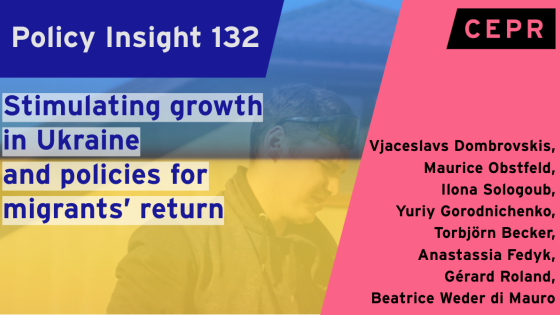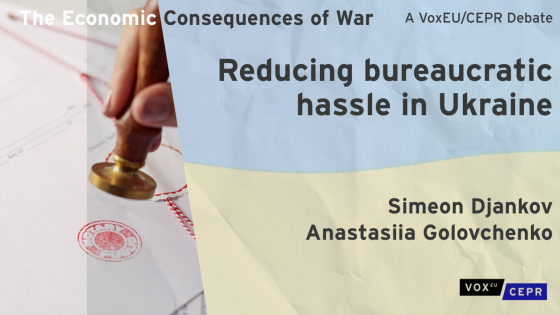Key infrastructure improvements, such as the extension of the standard European railroad gauge into Ukraine, will integrate these clusters with European markets, maximising export potential and attracting both domestic and foreign direct investments.
Outside the safety clusters, we advocate for a decentralised production strategy, focusing on adaptable sectors such as agriculture and information services. In regions closer to the frontline, solutions such as underground production and social facilities can be used.
In parallel, we propose strategic human resource initiatives to improve labour allocation. Workers will be directed towards the fortified economic clusters and supported with affordable housing options to facilitate their relocation. To address the skill mismatches and shortages, intensified collaborations between businesses, educational institutions, and job-placement services are recommended. The government should play a crucial role in engaging marginally attached workforce segments by offering in-person schooling, re-training programmes, and public works, thereby enhancing formal labour participation. Organisations of internally displaced persons (IDPs) will be essential partners in these initiatives.
Addressing the unpredictability of military mobilisation and its impact on the labour force, which poses a significant risk to economic stability and foreign investment, is critical. We recommend establishing predictable mobilisation timelines and procedures that balance the immediate defence needs with long-term economic sustainability necessary to support the war effort.
In the short term, productivity can be significantly enhanced by advancing digitalisation and deregulating the economic landscape. Building on the success of e-government platforms like Diia and ProZorro, it is crucial to expand these tools at the community level to ensure efficient resource use, equitable opportunity distribution, and robust reconstruction efforts. A consistent and comprehensive data collection strategy will further inform and refine policy directions.
The long-term success of Ukraine hinges on the return of the refugees (Figure 1 shows the geographical distribution). Ukraine will need to work with its allies to win these people back by offering security, jobs, and housing, as well as an environment where corruption cannot impede human development and opportunity. Facing this monumental task, we must mobilise all resources and international support to ensure Ukraine not only survives but emerges stronger. As a transitional measure, we propose a policy whereby host countries support the war effort by sharing with Ukraine some of the tax revenues generated by refugees.
Figure 1 Current geographical distribution of Ukrainian refugees in Europe, the US, and Canada
Sources: European data from United Nations High Commission on Refugees (2024). Canadian data from Singer (2024). US data as of February 2023 from Ainsley (2023).
Note: US numbers are from early 2023.
This comprehensive strategy not only aims to sustain Ukraine through the ongoing conflict but also prepares the groundwork for a robust post-war recovery. Mobilising all resources and garnering international support are imperative as we tackle these monumental challenges to ensure Ukraine's resilience and prosperity.
We recognise that implementing our recommendations will be challenging, requiring buy-in from allies, substantial resources, and incentives for foreign businesses to invest in Ukraine. Additionally, the return of IDPs and migrants, alongside significant progress in combating corruption, are essential. Most critically, successful implementation demands high state capacity and coherence, as well as a whole-of-government commitment to this initiative. Therefore, mobilising all necessary resources and securing international support are imperative as we confront these significant challenges to ensure Ukraine's resilience, victory, and prosperity.
While we emphasise that short-term gains in production are likely to happen in western and southwestern regions of Ukraine, the post-war focus should shift to Ukraine’s eastern regions to prevent them from falling into a poverty trap and to address spatial disparities in development. Kharkiv, Dnipro, Mariupol, and other urban centres will be an economic backbone for any post-war security architecture. We strongly urge the government, Ukraine’s allies, and other stakeholders to develop plans for the recovery of the regions heavily affected by the war.
References
Ainsley, J (2023), “U.S. has admitted 271,000 Ukrainian refugees since Russian invasion, far above Biden’s goal of 100,000”, NBC News, 24 February.
Becker, T, B Eichengreen, Y Gorodnichenko, S Guriev, S Johnson, T Mylovanov, K Rogoff and B Weder Di Mauro (2022a), A Blueprint for the Reconstruction of Ukraine, CEPR Press.
Dombrovskis, V, M Obstfeld, I Sologoub, Y Gorodnichenko, T Becker, A Fedyk, G Roland and B Weder di Mauro (2024), “Stimulating Growth in Ukraine and Policies for Migrants’ Return”, CEPR Policy Insight 132.
Gorodnichenko, Y, I Sologoub, and B Weder di Mauro (2022), Rebuilding Ukraine: Principles and policies, CEPR Press.
Gylfason, T, E Hochreiter and T Kowalski (2023), “Ukraine’s future prosperity: What can be learned from Poland”, VoxEU.org, 22 March.
Singer, C (2024), “Thousands Of Ukrainians To Come To Canada In The First Few Months Of 2024”, Immigration.ca., 29 January.
UNHCR (2024), “Ukraine Refugee Situations”.













